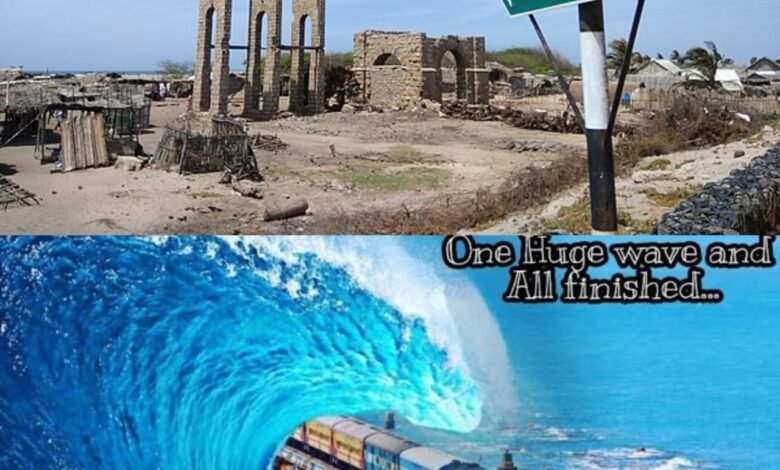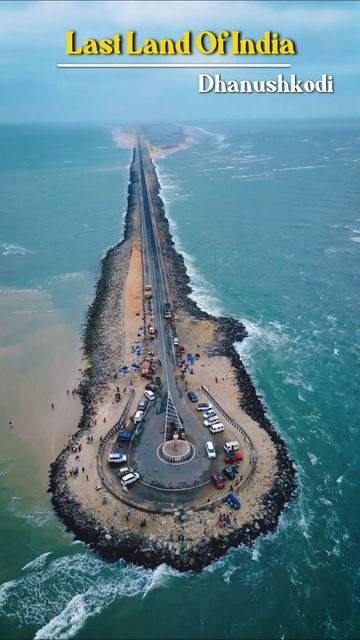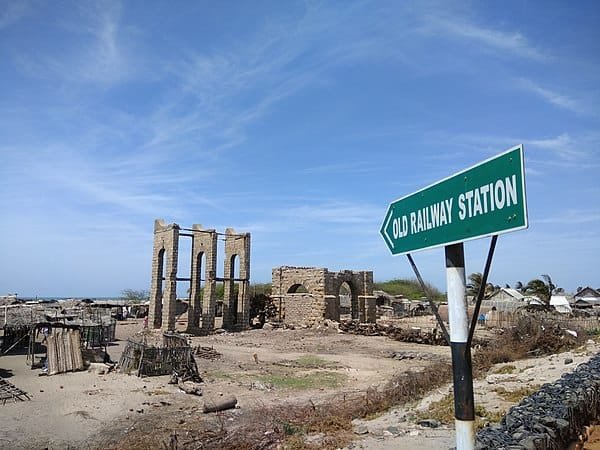Following inauguration of Pamban Bridge, Govt. eying to revive 1964 cyclone-damaged Dhanushkodi Rail line
Prime Minister Modi initiated the Rameswaram-Dhanushkodi rail project in 2019 to revive a 1964 cyclone-damaged line, but environmental and state government land acquisition delays cause concerns.

Abhishek Byahut
Dhanushkodi (Rameswaram)
The first vertical-lift Pamban Bridge in India, connecting Rameswaram island with rail connectivity, has been completed. Following its inauguration, the central government and Railway Ministry will expedite plans to expand train services from Rameswaram station to Dhanushkodi.
In 2019, Prime Minister Narendra Modi inaugurated the Rameswaram-Dhanushkodi rail project, but five years later, it remains stalled due to environmental concerns and delays in land acquisition from the Tamil Nadu government.
Talks between the Central and Tamil Nadu Governments are ongoing. If an agreement is reached, the project will be expedited. In the coming years, trains will operate from Rameswaram to Dhanushkodi, as efforts to revive the historic railway line, originally closed due to the 1964 tsunami, are underway.
In 2018-2019, a survey approved the reconnection of Rameswaram to Dhanushkodi by rail, with funds sanctioned. This project will revive Dhanushkodi’s rail heritage and boost local tourism and development.

The Rameswaram-Dhanushkodi rail link was destroyed in the 1964 cyclone, which obliterated the railway station and infrastructure built by the British. The train operated on this route until the disaster on December 22-23, 1964.
The railway line and station still exist and attract visitors today, having served as a key travel link between India and Sri Lanka. Steamer services to Ceylon (now Sri Lanka) operated here, resulting in the loss of hundreds of lives, including train staff and passengers, in this disaster.

No initiatives were made to restore the railway line until March 2019, when Prime Minister Narendra Modi laid the foundation stone for the Rameswaram-Dhanushkodi rail project.
The project includes a 17.3 km broad gauge line with 13 km of elevated track, showcasing modern engineering. Three halt stations and a terminal will be built at an estimated cost of Rs 733. 91 crore allocated, with Rs 17.61 crore spent on initial works.


The project is pending land and environmental clearances. 66 hectares of private land, 28.61 hectares of forest. The Tamil Nadu government has addressed environmental concerns related to 82 hectares of government land for the railways.
The state government requested the railways to revise the project, enabling faster progress if bottlenecks are resolved. The reconstruction of this rail link will facilitate access to Dhanushkodi, which is significant both religiously and historically.
Lakhs of tourists can now easily reach Dhanushkodi, boosting local tourism. Dhanushkodi was a historic Indian Railways station connecting Ceylon in Sri Lanka to Mandapam in India.
This area gained recognition for its location atop Pamban Island, where steamer services operated until 1964, enhancing economic and cultural ties between India and Sri Lanka. With government approval, this project will revive Dhanushkodi’s rail heritage and boost the region’s economic and cultural development.
The railway’s move exemplifies the Modi government’s “Development with Heritage” policy, as the Rameswaram-Dhanushkodi rail link project honors the memories of those who lost their lives in the 1964 cyclone Decades later, the area will buzz with railway engines and bustling passengers once again.





